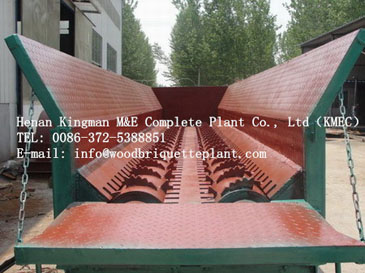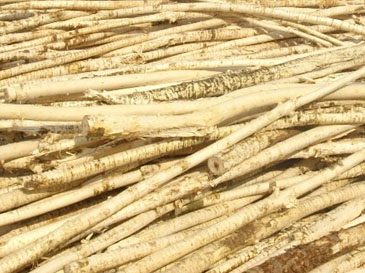The use of wood barking machine
Why is a wood barking machine necessary for a briquette plant?
Wood barking machine is widely used to debark coniferous wood, broad-leaved wood, partially for frozen wood and dried wood. The wood barking machine mainly consists of the main shafts, inlet, bark outlet and wood outlet and driving system. The newly designed separated outlets for wood logs and bark can ensure a constantly stable performance so that a continuous peeling can be realized. The unique strength formed by rotors with staggered aligned teeth (or called cusps) will rotate wood logs in a reciprocating circle in the chamber, furthermore, wood logs under the force will gyrate itself with irregular throbs so that between logs and those cusps, logs each other as well as logs and peeling groove, forces of rubbing, bumping and squeezing will mingle together to peel off logs.
Rotor debarking is the most commonly used method of debarking in the sawmill or veneer industry. Debarking improves the processes of a modern production plant in many ways. A common reason for debarking is related to quality requirements concerning the woodchips. Efficiency and cost savings are other reasons for introducing debarks in briquetting plant.


A roller debarker from Biomass Engineering & Equipment is the proper debarker for high volume pulpwood debarking. It is capable of debarking softwood or hardwood, and excels at debarking wood that is typically challenging, such as frozen wood, crooked wood, and wood species with stringy bark. In contrast of the rotary log debarker, the double roller debarking machine can work continuously in the whole process. Because the wood can be rotated with irregular movement in the log peeler, so the recess of the curve wood can touch the sheller teeth, the bark can be shelled much more easily then other log peelers. The log peeling machine is easy to maintain, featured with small consumption, low failure rate, low noise and vibration.
For clients who intend to use wood logs or lumber as the raw materials for briquetting and expect to build up a briquette plant, the first step is supposed to debark the logs or lumber material due to the anomalous surface of bark which may not be crushed by a hammer mill or crusher or even pose damage to the
hammer mill and crusher.
From time to time, bark from logs and lumber is pretty fresh and to some extent contains higher moisture, which will toughen up the work of material crushing on the one hand, and on the other, it will speed up corrosion upon hammers of a hammer mill or cutterheads of a crusher. Therefore, debarking remains a compulsory aspect prior to briquetting.
What is the use of stripped bark from logs or lumber?
You should concern too much about the result that bark stripped from wood will be wasted. Actually, if you are considering to establish a briquette plant, a drying system is quite necessary. If so, barks and other wood residues can be put into application as fuel for the stove of a drying system. Comparing with gas burner or fossil fuel, the wood residue, namely bark, is favorably a kind of recycled fuel to lighten fuel pressure and the applicable value of biomass will be increased. Aside from the edge, costs in a briquette plant would also be reduced.
As for dust collection, Kingman will offer you relevant cleaning system to assure you that emissions of inhalable particles to the open air can be dwindled to make the operation of the briquette plant more environment-friendly.
------------------------------------------------------------------------------------------------------------
KMEC is specialized in manufacturing and providing a number of biomass briquetting equipment such as briquetting machine and pellet mill.

